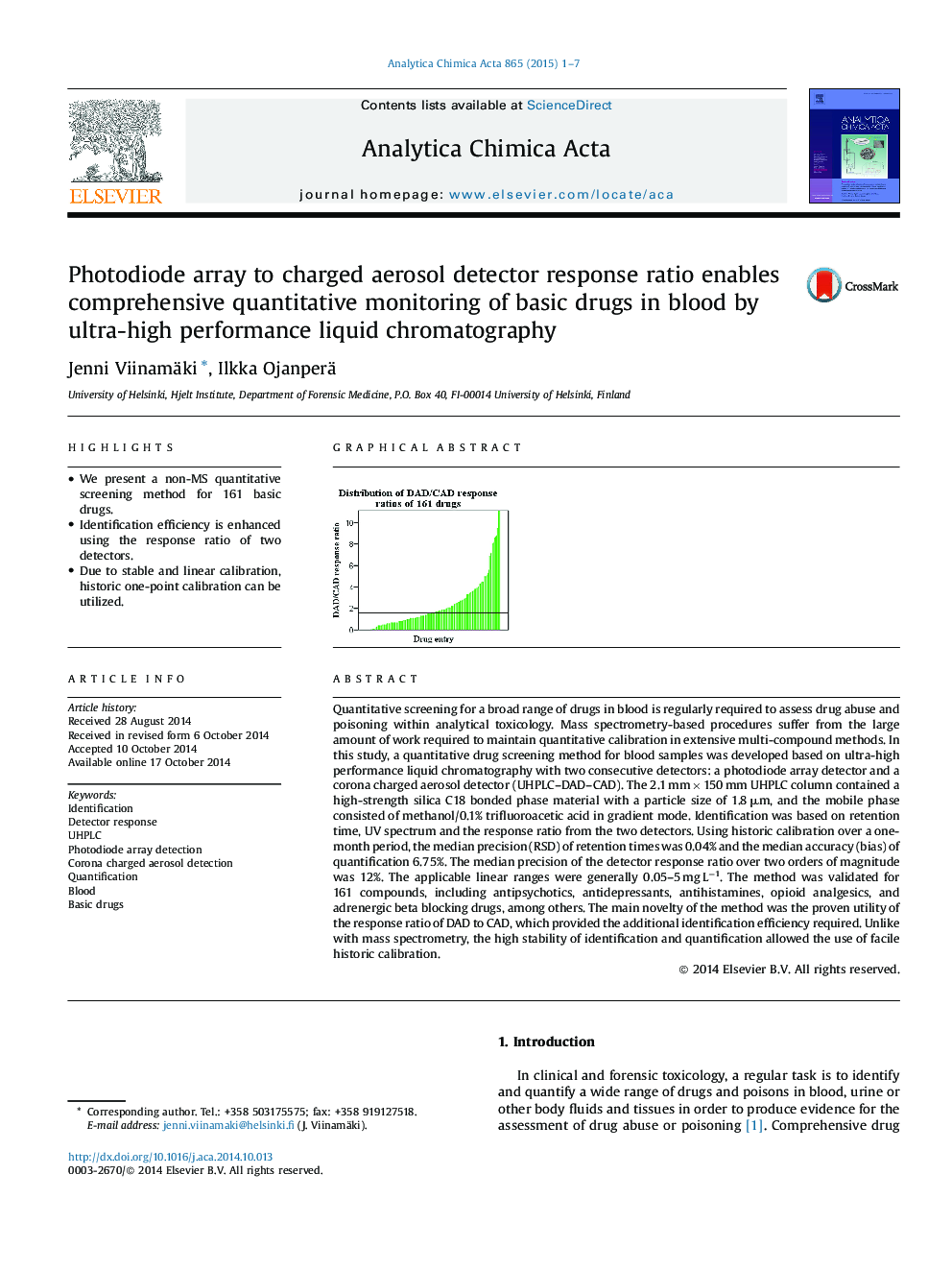| Article ID | Journal | Published Year | Pages | File Type |
|---|---|---|---|---|
| 1164019 | Analytica Chimica Acta | 2015 | 7 Pages |
•We present a non-MS quantitative screening method for 161 basic drugs.•Identification efficiency is enhanced using the response ratio of two detectors.•Due to stable and linear calibration, historic one-point calibration can be utilized.
Quantitative screening for a broad range of drugs in blood is regularly required to assess drug abuse and poisoning within analytical toxicology. Mass spectrometry-based procedures suffer from the large amount of work required to maintain quantitative calibration in extensive multi-compound methods. In this study, a quantitative drug screening method for blood samples was developed based on ultra-high performance liquid chromatography with two consecutive detectors: a photodiode array detector and a corona charged aerosol detector (UHPLC–DAD–CAD). The 2.1 mm × 150 mm UHPLC column contained a high-strength silica C18 bonded phase material with a particle size of 1.8 μm, and the mobile phase consisted of methanol/0.1% trifluoroacetic acid in gradient mode. Identification was based on retention time, UV spectrum and the response ratio from the two detectors. Using historic calibration over a one-month period, the median precision (RSD) of retention times was 0.04% and the median accuracy (bias) of quantification 6.75%. The median precision of the detector response ratio over two orders of magnitude was 12%. The applicable linear ranges were generally 0.05–5 mg L−1. The method was validated for 161 compounds, including antipsychotics, antidepressants, antihistamines, opioid analgesics, and adrenergic beta blocking drugs, among others. The main novelty of the method was the proven utility of the response ratio of DAD to CAD, which provided the additional identification efficiency required. Unlike with mass spectrometry, the high stability of identification and quantification allowed the use of facile historic calibration.
Graphical abstractFigure optionsDownload full-size imageDownload as PowerPoint slide
